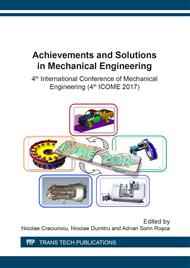p.3
p.9
p.15
p.21
p.27
p.33
p.39
p.45
p.53
Experimental and Numerical Analyses of the Flow and Temperature of Buoyancy-Marangoni Convection in a Liquid
Abstract:
Flow patterns and temperature distributions of buoyancy–Marangoni convection in a liquid were analyzed both experimentally and theoretically. We focused on two-dimensional natural convection in a horizontal liquid layer. In the experiment, silicone oil (with a viscosity of 1 × 10−5 m2/s) was used as a test liquid and the temperature and velocity fields were visualized using liquid crystal capsules. The visualization experiment included cases of both steady flow and oscillatory flow. In the case of a deep liquid layer, an oscillatory flow with repeated acceleration and deceleration occurred due to the interaction of the buoyancy convection and the Marangoni convection; however, this did not occur when the liquid layer was shallow. In the numerical calculation, the governing equations of buoyancy–Marangoni convection were solved using a finite difference method. The numerical calculation results demonstrate that the position of the downward flow due to buoyancy convection was changed by the Marangoni convection, which agreed with the experimental result.
Info:
Periodical:
Pages:
27-32
Citation:
Online since:
March 2018
Authors:
Price:
Сopyright:
© 2018 Trans Tech Publications Ltd. All Rights Reserved
Share:
Citation:


